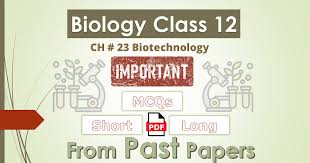Introduction
Studying for your BIO II semester test can be daunting, especially when covering complex topics like those found in Chapters 23 to 25. This review article aims to break down the key concepts and essential information from these chapters, making it easier for you to understand and remember. Let’s dive into the fundamental topics and critical details you need to master.
Chapter 23: Evolution of Populations
Genetic Variation
Importance of Genetic Variation
Genetic variation is crucial for a population’s survival and adaptability. It provides the raw material for evolution and helps populations adapt to changing environments.
Sources of Genetic Variation
- Mutations: Random changes in DNA that create new alleles.
- Sexual Reproduction: Shuffling of genes during meiosis and fertilization, leading to new genetic combinations.
- Gene Flow: Movement of genes between populations through migration, introducing new genetic material.
Hardy-Weinberg Principle
Conditions for Equilibrium
The Hardy-Weinberg principle states that allele and genotype frequencies will remain constant from generation to generation in the absence of evolutionary influences. The conditions required for this equilibrium include:
- No mutations
- Random mating
- No natural selection
- Extremely large population size
- No gene flow
Equation and Application
The Hardy-Weinberg equation (p² + 2pq + q² = 1) helps calculate the genetic variation of a population at equilibrium. Here, ppp and qqq represent the frequencies of the dominant and recessive alleles, respectively.
Evolutionary Forces
Natural Selection
Natural selection is the process where organisms better adapted to their environment tend to survive and produce more offspring. Key types include:
- Directional Selection: Favors one extreme phenotype.
- Disruptive Selection: Favors both extreme phenotypes.
- Stabilizing Selection: Favors intermediate phenotypes.
Genetic Drift
Genetic drift refers to random changes in allele frequencies, which can have a significant effect in small populations. Examples include:
- Bottleneck Effect: Drastic reduction in population size due to a sudden event.
- Founder Effect: A few individuals colonize a new habitat, leading to different allele frequencies.
Gene Flow
Gene flow involves the transfer of alleles or genes from one population to another, reducing genetic differences between populations.

Chapter 24: The Origin of Species
Concepts of Species
Biological Species Concept
Defines a species as a group of interbreeding populations that are reproductively isolated from other such groups. Key points include:
- Reproductive Isolation: Prevents gene flow between populations.
- Prezygotic Barriers: Prevent mating or fertilization (e.g., habitat isolation, temporal isolation).
- Postzygotic Barriers: Prevent hybrid offspring from developing into viable, fertile adults (e.g., hybrid sterility).
Other Species Concepts
- Morphological Species Concept: Based on physical characteristics.
- Ecological Species Concept: Based on ecological niche.
- Phylogenetic Species Concept: Based on evolutionary history.
Speciation
Allopatric Speciation
Occurs when a population is geographically divided, leading to the evolution of reproductive isolation. Key processes include:
- Geographic Isolation: Physical barriers such as mountains or rivers.
- Divergence: Accumulation of genetic differences due to mutation, natural selection, and genetic drift.
Sympatric Speciation
Occurs without geographic isolation. Mechanisms include:
- Polyploidy: Increase in the number of chromosomes.
- Habitat Differentiation: Exploitation of different resources.
- Sexual Selection: Preference for specific traits in mates.
Hybrid Zones
Definition and Dynamics
Hybrid zones are regions where different species meet and mate, producing offspring of mixed ancestry. They can provide insights into the processes of reproductive isolation and speciation.
Outcomes
- Reinforcement: Strengthening of reproductive barriers.
- Fusion: Weakening of reproductive barriers, leading to the merging of species.
- Stability: Continued production of hybrid individuals.
Chapter 25: Phylogeny and the Tree of Life
Phylogenetic Trees
Understanding Phylogenetic Trees
Phylogenetic trees depict the evolutionary relationships among species. They are based on shared characteristics and genetic data. Key components include:
- Nodes: Represent common ancestors.
- Branches: Represent evolutionary lineages.
- Clades: Groups of organisms that include an ancestor and all its descendants.
Building Phylogenetic Trees
Phylogenetic trees are constructed using various methods, including:
- Morphological Data: Physical traits and structures.
- Molecular Data: DNA sequences and genetic information.
- Computational Tools: Algorithms and software for analyzing data.
Systematics and Classification
Taxonomy and Hierarchical Classification
Taxonomy is the science of naming and classifying organisms. The hierarchical classification system includes:
- Domain: Highest level (e.g., Archaea, Bacteria, Eukarya).
- Kingdom: Subdivision of domains (e.g., Animalia, Plantae).
- Phylum, Class, Order, Family, Genus, Species: Further subdivisions.
Cladistics
Cladistics is a method of classifying organisms based on common ancestry. It involves identifying shared derived characteristics and grouping organisms into clades.
Molecular Clocks
Definition and Use
Molecular clocks use the rate of genetic mutations to estimate the time of evolutionary events. They are useful for dating the divergence of species and constructing phylogenies.
Calibration and Limitations
Molecular clocks require calibration with known evolutionary events or fossil records. Limitations include variation in mutation rates and incomplete fossil records.
Conclusion
Chapters 23 to 25 of BIO II cover essential concepts in evolution, speciation, and phylogeny. Understanding genetic variation, the mechanisms of speciation, and the construction of phylogenetic trees provides a solid foundation for studying biology. By mastering these topics, you can better appreciate the complexity and diversity of life on Earth. Use this review as a guide to help you prepare for your semester test and gain a deeper understanding of these fascinating subjects.

